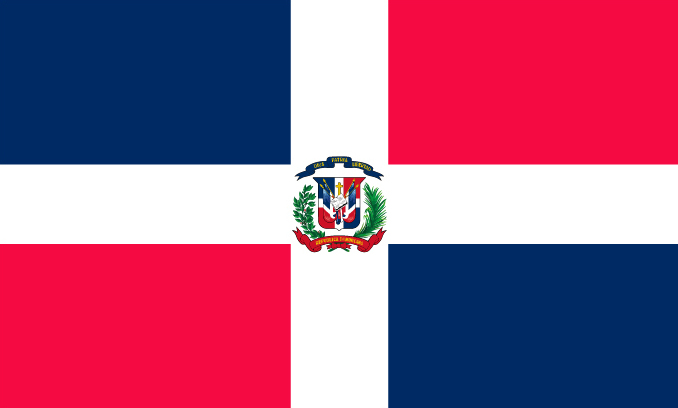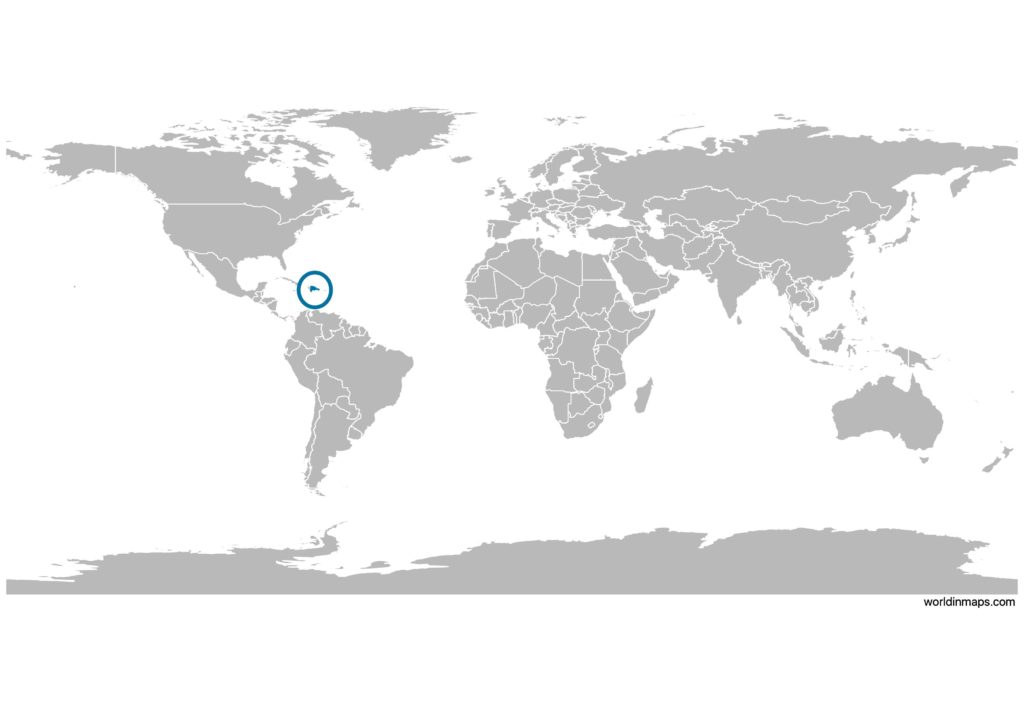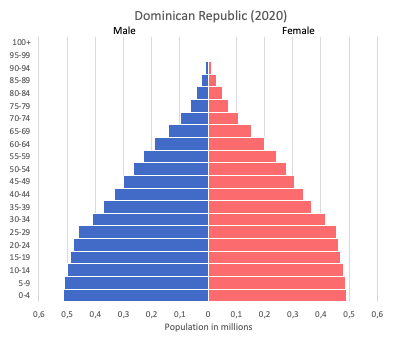Dominican Republic

| Government | |
| Name | Dominican Republic |
| Spanish | República Dominicana |
| Government type | Presidential republic |
| Capital | Santo Domingo (2,908,607 (2015)) |
| Currency | Peso (DOP) |
| People | |
| Population (2020) | 10,847,904 (88th) |
| Density of population | 220 P/km2 (65th) |
| Nationality | Dominican |
| Official languages | |
| Spanish | |
| Ethnic groups (2014) | |
| Mixed | 70.4% |
| Mestizo/indio | 58% |
| Mulatto | 12.4% |
| Black | 15.8% |
| White | 13.5% |
| Other | 0.3% |
| Religions (2017) | |
| Roman Catholic | 47.8% |
| Protestant | 21.3% |
| Other | 2.2% |
| None | 28% |
| Undefined | 0.7% |
| Life expectancy (2020) | |
| Male | 70.3 years |
| Female | 73.8 years |
| Total population | 72 years (155th) |
| Homicides | |
| Total (2018) | 10.0 per 100,000 people (35th) |
| Geography | |
| Land area | 48,320 km2 |
| water area | 350 km2 |
| total area | 48,670 km2 (132nd) |
| Mean elevation | 424 m |
| Lowest point | |
| Lago Enriquillo | -46 m |
| Highest point | |
| Pico Duarte | 3,098 m |
| Land use (2011) | |
| Agricultural land | 51.5% |
| Arable land | 16.6% |
| Permanent crops | 16.6% |
| Permanent pasture | 24.8% |
| Forest | 40.8% |
| Other | 7.7% |
| Urbanization | |
| Urban population (2020) | 82.5% |
| Rate of urbanization | 2.06% annual rate of change (2015 – 2020) |
| Economy | |
| Labor force (2017) | 4.732 million (85th) |
| Labor force by occupation (2014) | |
| Agriculture | 14.4% |
| Industry | 20.8% |
| Services | 64.7% |
| Unemployment rate (2017) | 5.1% (76th) |
| GDP (PPP) (estimate 2020) | |
| Total | $215.999 billion |
| Per capita | $20,625 |
| GDP (nominal) (estimate 2020) | |
| Total | $96.291 billion |
| Per capita | $9,195 |
| GDP by sector (estimate 2017) | |
| Agriculture | 5.6% |
| Industry | 33% |
| Services | 61.4% |
| Exports (2017) | $10.12 billion (91st) |
| Exports partners (2017) | |
| US | 50.3% |
| Haiti | 9.1% |
| Canada | 8.2% |
| India | 5.6% |
| Imports (2017) | $17.7 billion (82nd) |
| Imports partners (2017) | |
| US | 41.4% |
| China | 13.9% |
| Mexico | 4.5% |
| Brazil | 4.3% |
Dominican Republic on the world map

Dominican Republic top 10 largest cities (2015)
- Santo Domingo (2,908,607)
- Santiago de los Caballeros (553,091)
- La Vega (210,736)
- San Cristóbal (209,165)
- San Pedro de Macorís (205,911)
- San Francisco de Macorís (138,167)
- La Romana (130,842)
- Higüey (128,120)
- Puerto Plata (122,186)
- Moca (92,111)
Demography
Population pyramid

Age structure data
Estimate for 2020:
- 0-14 years: 26.85% (male 1,433,166/female 1,385,987)
- 15-24 years: 18.15% (male 968,391/female 937,227)
- 25-54 years: 40.54% (male 2,168,122/female 2,088,926)
- 55-64 years: 8.17% (male 429,042/female 428,508)
- 65 years and over: 6.29% (male 310,262/female 350,076)
Remark: the age structure of a population affects a nation’s key socioeconomic issues. Countries with young populations (high percentage under age 15) need to invest more in schools, while countries with older populations (high percentage ages 65 and over) need to invest more in the health sector. The age structure can also be used to help predict potential political issues. For example, the rapid growth of a young adult population unable to find employment can lead to unrest.
Population from 1950 to 2020
Source: United Nations, Department of Economic and Social Affairs, Population Division (2019). World Population Prospects 2019, Online Edition. Rev. 1.
Evolution of the life expectancy from 1960 to 2018
Source: World Development Indicators, The World Bank
Economy
Agriculture:
cocoa, tobacco, sugarcane, coffee, cotton, rice, beans, potatoes, corn, bananas, cattle, pigs, dairy products, beef, eggs
Industries:
tourism, sugar processing, gold mining, textiles, cement, tobacco, electrical components, medical devices
Exports – commodities:
gold, silver, cocoa, sugar, coffee, tobacco, meats, consumer goods
Imports – commodities:
petroleum, foodstuffs, cotton and fabrics, chemicals and pharmaceuticals
Time zone and current time in Dominican Republic
Go to our interactive map to get the current time in Dominican Republic